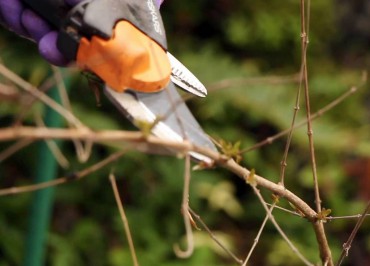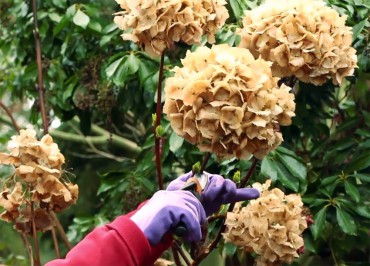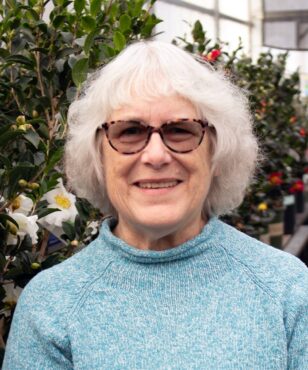Woody plants — shrubs and trees — by their nature may require pruning. Gardeners may feel apprehensive about this task. Never fear, here are a few tips to assist you and a segment of Gardening with Peg for building confidence.
The main reasons to prune are to allow air to circulate and to maintain plant health. One other reason is in fruit production from berries and fruit trees. Today’s topic only deals with ornamentals.
The key is to know your plant. Knowing the plant’s normal growth pattern helps determine if it even needs to be pruned at all. Many times a woody plant will only need pruning to remove the three “Ds”: dead, diseased and dumb.
 There are always exceptions to some of the rules gardeners learn for taking care of plants. Some shrubs and even a few small trees need to be cut clear to the ground, depending on the variety of the plant.
There are always exceptions to some of the rules gardeners learn for taking care of plants. Some shrubs and even a few small trees need to be cut clear to the ground, depending on the variety of the plant.
Hydrangeas are an example. Some varieties of rugosa roses and shrub roses are another example. This task ranges from once a year to once every three years plus other variations.
Usually only remove twigs and branches if they are dead, diseased or dumb (meaning crossing, rubbing, too crowded). Always use clean, sharp tools and when removing diseased plant material, make sure to sanitize the tools when moving from one plant to another.
This can be done by spraying the tool with a weak bleach solution or using alcohol wipes to sanitize blades. That way you won’t be spreading any disease from one plant to another.
Some plants take easily to pruning and those are used for hedges, living fences or screening. Yew and laurels are two examples. Use long, straight blades of hedge trimmers for this task.
For other tasks, use the following tools: bypass pruners, pruning saws and flat-bladed pruners.
 Bypass pruners come in several different sizes. Long-handled and handheld bypass pruners are two examples.
Bypass pruners come in several different sizes. Long-handled and handheld bypass pruners are two examples.
Pruning saws are also necessary for larger plants and trees. The flat-bladed pruners called anvil type should only be used for removing dead plant materials. Know that these types of pruners will crush the material and should almost always be avoided entirely.
Pruning is most often performed in late winter and into spring. Plant growth is stimulated by pruning and it is important to choose the correct time of year for the plant’s growth habit.
Also know that it’s always best to stop pruning before you think you’re done with the task. You can always go back later if you see something you forgot to prune off, but you can’t glue plant parts back on when you get too zealous in cutting and whacking.
“Right plant, right place” is a term to always remember. Consult with gardening experts in our area. Certified professional horticulturists at local nurseries and Master Gardeners at the WSU Extension Office and local farmers markets are good resources.
Visit local nurseries and gardens such as Heronswood and Bloedel to see how established display plants grow. Notice the woody plants (shrubs and trees) when you take walks through your own neighborhood. You’ll see how plants grow in different situations.
Consult gardening books for our region and read plant tags before purchasing plants. All these resources will provide a good idea of how big a plant will become at maturity. In our wonderful growing climate, plants grow pretty fast. Keep all this in mind.
The biggest mistake made in pruning is when a person purchases a plant that by its genetic makeup wants to grow large and instead it is pruned back all the time and it eventually dies. If you desire small space plants, you’ll want to avoid purchasing big shrubs and trees.
One of the best resources for pruning in our area is Plant Amnesty. Yearly memberships include access to pruning sheets for numerous woody shrubs and trees.
The book “Cass Turnbull’s Guide to Pruning” is an excellent resource. “Rodale’s Successful Organic Gardening Pruning” book is also excellent. It includes color photos, a description of the plant, when to prune, how to prune and special tips.
“The Pruning of Trees, Shrubs and Conifers” by George Brown has been revised and enlarged recently by Tony Kirkham. It does not have photos or illustrations, but if you’re really in to pruning it’s one of the “bibles” for arborists and horticulturists in the field of trees and shrubs.



























